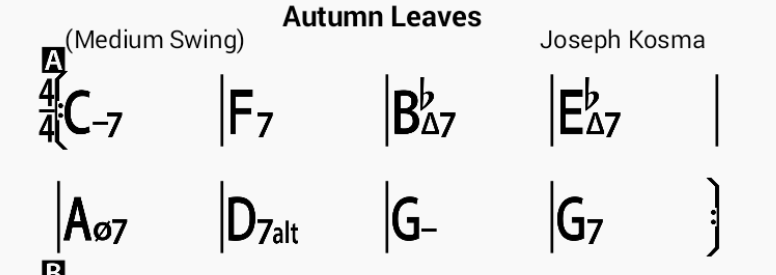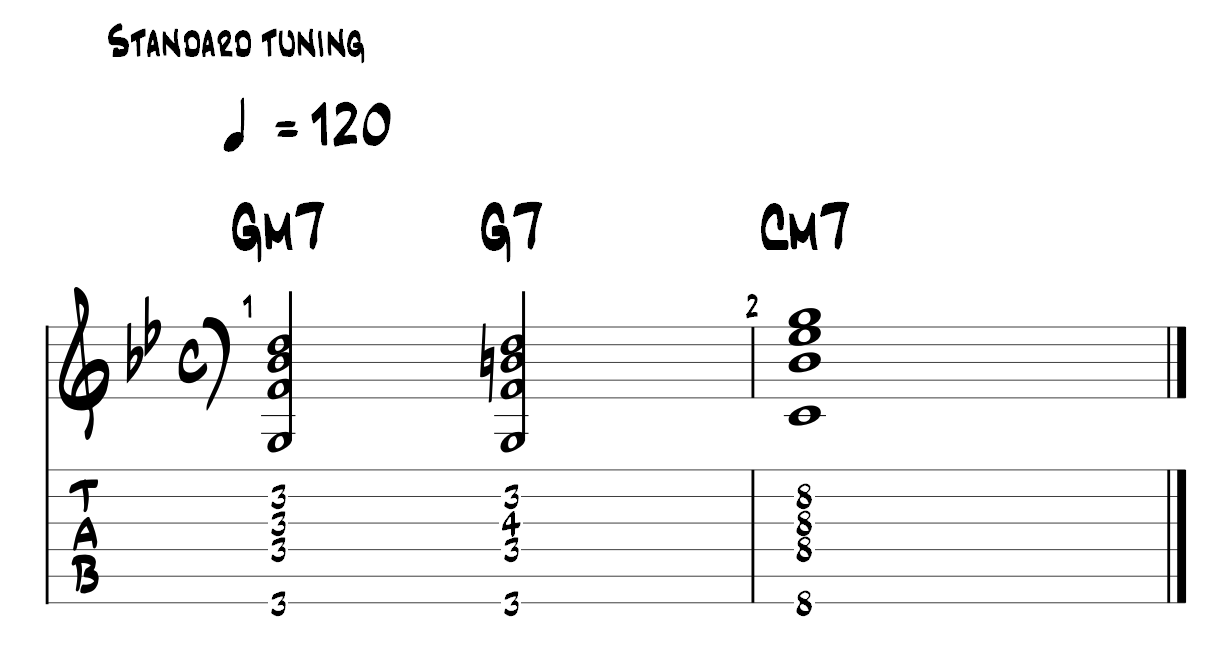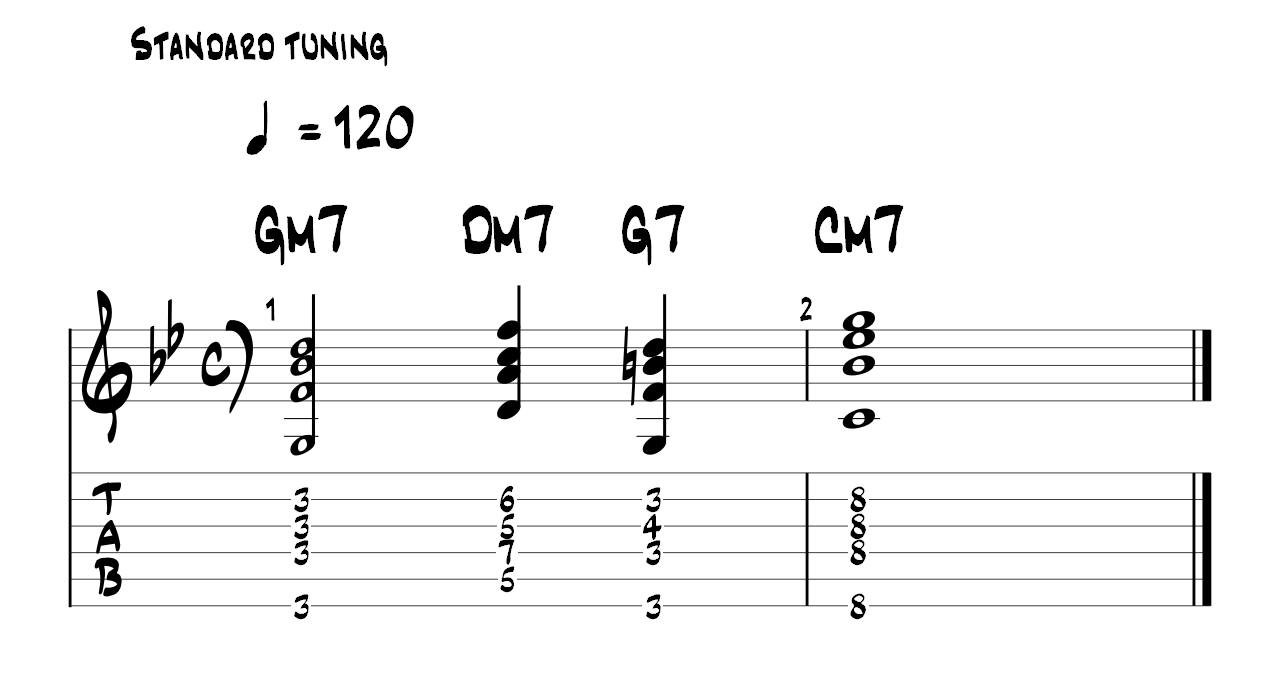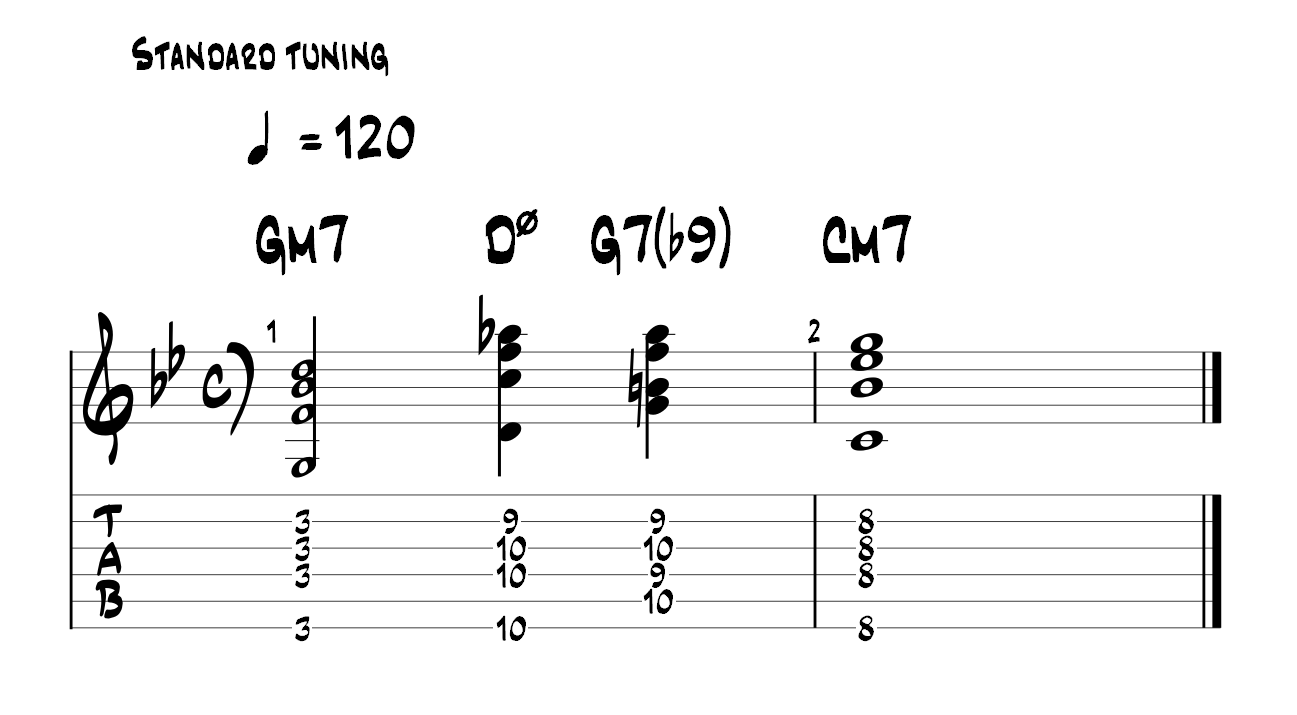In a previous post we started looking at the jazz standard Autumn Leaves. We looked at the following chord progression contained in that tune:

What’s the G7 in the last bar for? Well, this is an example of a secondary dominant.
Any diatonic chord may be preceded by a dominant 7th chord whose root is a 5th above its own root.
Note that the resulting dominant 7th chord will be chromatic, not diatonic to the current key.
In the case of Autumn Leaves the tune progresses through a major ii-V-I and a minor ii-V-i which leaves us on the Gm in measure 7. We now want to create a sense of forward motion to get us back to Cm7 to start the cycle again. To do that we use a secondary dominant.
Cm7 has a root of C so we take a note a 5th above (G) and use it as the root note of a dominant 7th chord (G7) and slot that in between the Gm7 and the target Cm7.
Looking at the harmonic content of the G7 chord it contains a tritone between the b7 and 3 (F and B). We can resolve that by treating the B as a Leading Note and moving it to a C. We accomplish that by moving from the G7 to Cm7 so we can start the sequence again. Note also that moving from G (root of G7) to C (root of Cm7) is back-cycling the cycle of 5ths maintaining strong root movement.

A note about notation: you might see instances where a chord is marked something like V7/ii. That is meant to indicate that the chord is the secondary dominant – a V7 to the ii chord – as G7 is to Cm7 in this example.
Secondary ii-V
It turns out you can extend this concept a bit further by adding in another chord.
Any secondary dominant can be preceded by its own ii chord.
We described above how we derive the secondary dominant by treating the target chord’s root as the tonal centre and creating a dominant 7th chord a fifth above. Well, we can now add the equivalent ii chord as well, a minor 7th. What you end up with is what’s known as a secondary ii-V progression.
If we take the same example of moving from Gm7 to Cm7 again we already know that the secondary dominant is G7. It’s ii chord would be Dm7 so we can add that before it giving us the following progression.

What about minor keys?
It seems there are no hard and fast rules here but in general if the target chord is a major chord using the approach described above works fine by preserving the major tonality. However, if the target chord is minor you might want to emphasise that by using minor tonalities in the approaching secondary chords.
Recall that harmonising in a minor key would result in a m7b5 for the ii chord and an altered dominant for the V. Applying this to our example (moving from Gm7 to Cm7) would give us something like the following.

More reading
I found the following 2 forum threads quite interesting:

Hello again 😀 I found your blog today and that is why I would like to share my thoughts with You about what I miss most as a self-taught person. By the way,I use an electronic translator so I hope that I will be understandable. I would be happy if you would treat it as inspiration for the next lesson 🙂 1 – Could You make lesson/lessons about 3rd and 7th mode of double harmonic major? 3rd mode – Ultraphrygian (g#, a, b, c, d#,e,f) 7th mode – Locrian bb3 bb7 ( d#,e,f,g#, a,b, c ) What are the diatonic… Read more »
Hi again. Wow! You’ve been giving this a lot of thought. I’m not sure I’m best placed myself to advise on this level theory. I’m learning just like you and I record my findings in this blog to reinforce my understanding. I suggest you try asking these questions one of the jazz forums like http://www.jazzguitar.be/forum/. I’m sure there will be a lot of people there willing and better able than me to help. I will also say that having a teacher is really worthwhile. After many years of being self-taught I recently started taking lessons over Skype. It actually works… Read more »
I would love to have a teacher, but it is not possible. I live in a village forgotten by the gods,I have internet but I do not have money for Skype lessons… it’s a long and complicated story, the only thing left to me is free information in web 🙂 That’s why I sometimes try to inspire teachers from the internet 😀 Once I was at this Jazz Guitar Forum but…I met two groups of people: some were too educated and instead of explaining the rules in the essential way, they preferred dazzle erudition and in effect they did from… Read more »